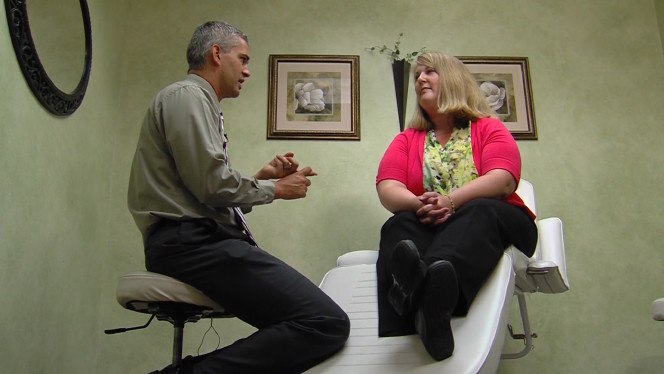Estimated read time: 3-4 minutes
This archived news story is available only for your personal, non-commercial use. Information in the story may be outdated or superseded by additional information. Reading or replaying the story in its archived form does not constitute a republication of the story.
SALT LAKE CITY — It's a disease that affects one in 10 women and causes crippling pain and infertility. For many women who have endometriosis, the disease is often a dream-killer.
But an innovative surgery is providing those women with new hope for freedom from pain without a hysterectomy and a chance at motherhood.
Endometriosis occurs when endometrial tissue, typically found inside the uterus, grows on the outside of the uterus. This "displaced endometrial tissue continues to act as it normally would — it thickens, breaks down and bleeds with each menstrual cycle," an article from the Mayo Clinc staff explains.
Many women and teenage girls confuse the symptoms of endometriosis with bad menstrual cramps.
"If I had sought treatment sooner and been diagnosed sooner, things could have been treated before they got so bad," said Emily Cottrell, who had endometriosis.
"Endometriosis (en-doe-me-tree-O-sis) is an often painful disorder in which tissue that normally lines the inside of your uterus — the endometrium — grows outside your uterus. ... In endometriosis, displaced endometrial tissue continues to act as it normally would — it thickens, breaks down and bleeds with each menstrual cycle. Because this displaced tissue has no way to exit your body, it becomes trapped. ... Endometriosis can cause pain — sometimes severe — especially during your period. Fertility problems also may develop. Fortunately, effective treatments are available."
Source: MayoClinic.org
Cottrell suffered severe pain, nausea and headaches for years, beginning with her first period. Her severe pain made doing her job tough because she was on her feet six hours at a stretch cleaning houses.
"That's a really active job, and it would be really hard to go to work for six hours on my feet," she said.
But when Cottrell and her husband wanted to have a baby, she found her uterus was too badly damaged from the disease. After an unsuccessful attempt at in vitro fertilization she had a hysterectomy.
Dr. Jeff Arrington, OB-GYN and excision specialist at the Ogden Clinic, says displaced endometrial tissue can be removed without a hysterectomy. Many are told it's the definitive treatment, but he says that's just not true.
"The worst cases I see are in their late 20s and they've struggled for so many years and never really had the disease taken care of," Arrington said. "Now they're struggling with fertility concerns and needing to consider hysterectomy."
Arrington said early detection and complete removal of the tissue by an excision specialist can dramatically decrease the need for repetitive surgeries and problems with infertility.
Rachel Budge's pain was so bad she took prescription pain killers on and off throughout the month when necessary — not just during her period. Her endometriosis made being a mother almost impossible.

Dr. Jeff Arrington visits with patient Rachel Budge, who suffered from endometriosis prior to a hysterectomy. (Photo: KSL-TV)
"Trying to take care of a baby while your endo is flaring is the hardest thing I've done in my life," she said.
"I remember crawling on the floor," Budge continued, pushing back tears, "just completely ignoring my needs to be able to care for my baby."
Doctors say endometriosis has been found in every area of the body except the spleen. Budge even had it on her heart.
The disease doesn't show up on scans. It looks like little black dots or blisters on surgical photos.
"I've cut holes in bladders to take endometriosis out," Arrington said. "Just this week, we've had two patients where we've had to cut holes in the bowel to get endometriosis."
Arrington said many OB-GYNs don't have the training to remove endometriosis around the bowel and bladder, but leaving tissue inside the body means it will grow back. He recommends patients look for an excision specialist who may have recurrent surgery rates below 20 percent.
Budge has had a total of six surgeries, including a hysterectomy to control irregular, heavy bleeding. Her pain is almost gone.
"I feel like I can really set goals again," Budge said. "I can dream again."
Cottrell, too, is enjoying life again after her hysterectomy.
There is help if you or a loved one suffers from endometriosis. Visit the national "killer cramps" campaign at endofound.org, and join the EndoMetropolis and Nancy's Nook group pages on Facebook.







